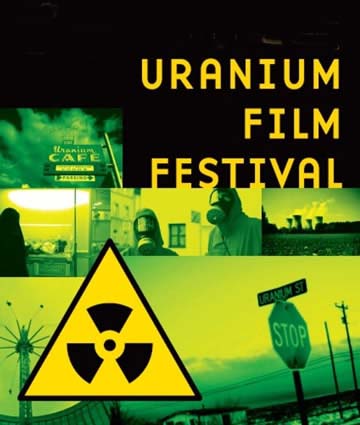Monumental showdown between grassroots campaigners and Coal, Oil, Nuclear, and Gas
 King CONG vs. Solartopia, The Progressive December 5, 2016, Harvey Wasserman “………Some 10,000 arrests of citizens engaged in civil disobedience have put the Diablo nuclear reactors at ground zero in the worldwide No Nukes campaign. But the epic battle goes far beyond atomic power. It is a monumental showdown over who will own our global energy supply, and how this will impact the future of our planet.
King CONG vs. Solartopia, The Progressive December 5, 2016, Harvey Wasserman “………Some 10,000 arrests of citizens engaged in civil disobedience have put the Diablo nuclear reactors at ground zero in the worldwide No Nukes campaign. But the epic battle goes far beyond atomic power. It is a monumental showdown over who will own our global energy supply, and how this will impact the future of our planet.
On one side is King CONG (Coal, Oil, Nukes, and Gas), the corporate megalith that’s unbalancing our weather and dominating our governments in the name of centralized, for-profit control of our economic future. On the other is a nonviolent grassroots campaign determined to reshape our power supply to operate in harmony with nature, to serve the communities and individuals who consume and increasingly produce that energy, and to build the foundation of a sustainable eco-democracy…….
with this dangerous and dirty power have come Earth-friendly alternatives, ignited in part by the grassroots movements of the 1960s. E.F. Schumacher’s Small Is Beautiful became the bible of a back-to-the-land movement that took a new generation of veteran activists into the countryside.
Dozens of nonviolent confrontations erupted, with thousands of arrests. In June 1978, nine months before the partial meltdown at Three Mile Island, the grassroots Clamshell Alliance drew 20,000 participants to a rally at New Hampshire’s Seabrook site. And Amory Lovins’s pathbreaking article, “Energy Strategy: The Road Not Taken,” posited a whole new energy future, grounded in photovoltaic and wind technologies, along with breakthroughs in conservation and efficiency, and a paradigm of decentralized, community-owned power.
As rising concerns about global warming forced a hard look at fossil fuels, the fading nuclear power industry suddenly had a new selling point. Climate expert James Hansen, former Environmental Protection Agency chief Christine Todd Whitman, and Whole Earth Catalog founder Stewart Brand began advocating atomic energy as an answer to CO2 emissions. The corporate media began breathlessly reporting a “nuclear renaissance” allegedly led by hordes of environmentalists.
But the launch of Peaceful Atom 2.0 has fallen flat.
 As I recently detailed in an online article for The Progressive, atomic energy adds to rather than reduces global warming. All reactors emit Carbon-14. The fuel they burn demands substantial CO2 emissions in the mining, milling, and enrichment processes. Nuclear engineer Arnie Gundersen has compiled a wide range of studies concluding new reactor construction would significantly worsen the climate crisis.
As I recently detailed in an online article for The Progressive, atomic energy adds to rather than reduces global warming. All reactors emit Carbon-14. The fuel they burn demands substantial CO2 emissions in the mining, milling, and enrichment processes. Nuclear engineer Arnie Gundersen has compiled a wide range of studies concluding new reactor construction would significantly worsen the climate crisis.
Moreover, attempts to recycle spent reactor fuel or weapons material have failed, as have attempts to establish a workable nuclear-waste management protocol. For decades, reactor proponents have argued that the barriers to radioactive waste storage are political rather than technical. But after six decades, no country has unveiled a proven long-term storage strategy for high-level waste.
For all the millions spent on it, the nuclear renaissance has failed to yield a single new reactor order. New projects in France, Finland, South Carolina, and Georgia are costing billions extra, with opening dates years behind schedule. Five projects pushed by the Washington Public Power System caused the biggest municipal bankruptcy in U.S. history. No major long-standing green groups have joined the tiny crew of self-proclaimed “pro-nuke environmentalists.” Wall Street is backing away.
Even the split atom’s most ardent advocates are hard-pressed to argue any new reactors will be built in the United States, or more than a scattered few anywhere else but China, where the debate still rages and the outcome is uncertain……..
Where once it demanded deregulation and a competitive market, the nuclear industry now wants re-regulation and guaranteed profits no matter how badly it performs.
The grassroots pushback has been fierce. Proposed bailouts have been defeated in Illinois and are under attack in New York and Ohio. A groundbreaking agreement involving green and union groups has set deadlines for shutting the Diablo reactors, with local activists demanding a quicker timetable. Increasingly worried about meltdowns and explosions, grassroots campaigns to close old reactors are ramping up throughout the United States and Europe. Citizen action in Japan has prevented the reopening of nearly all nuclear plants since Fukushima.
Envisioning the “nuclear interruption” behind us, visionaries like Lovins see a decentralized “Solartopian” system with supply owned and operated at the grassroots………
[In Germany] the transition is succeeding faster and more profitably than its staunchest supporters imagined. Wind and solar have blasted ahead. Green energy prices have dropped and Germans are enthusiastically lining up to put power plants on their rooftops. Sales of solar panels have skyrocketed, with an ever-growing percentage of supply coming from stand-alone buildings and community projects. The grid has been flooded with cheap, green juice, crowding out the existing nukes and fossil burners, cutting the legs out from under the old system.
In many ways it’s the investor-owner utilities’ worst nightmare,………
The revolution has spread to the transportation sector, where electric cars are now plugging into outlets powered by solar panels on homes, offices, commercial buildings, and factories. Like nuclear power, the gas-driven automobile may be on its way to extinction.
Nationwide, more than 200,000 Americans now work in the solar industry, including more than 75,000 in California alone. By contrast, only about 100,000 people work in the U.S. nuclear industry. Some 88,000 Americans now work in the wind industry, compared to about 83,000 in coal mines, with that number also dropping steadily.
Once the shining hope of the corporate power industry, atomic energy’s demise represents more than just the failure of a technology. It’s the prime indicator of an epic shift away from corporate control of a grid-based energy supply, toward a green power web owned and operated by the public.
As homeowners, building managers, factories, and communities develop an ever-firmer grip on a grassroots homegrown power supply, the arc of our 128-year energy war leans toward Solartopia.
Harvey Wasserman’s Solartopia! Our Green-Powered Earth is at solartopia.org. His Green Power & Wellness Show is at prn.fm. He edits nukefree.org. http://www.progressive.org/news/2016/12/189107/king-cong-vs-solartopia
No comments yet.
-
Archives
- May 2024 (24)
- April 2024 (367)
- March 2024 (335)
- February 2024 (345)
- January 2024 (375)
- December 2023 (333)
- November 2023 (342)
- October 2023 (366)
- September 2023 (353)
- August 2023 (356)
- July 2023 (362)
- June 2023 (324)
-
Categories
- 1
- 1 NUCLEAR ISSUES
- business and costs
- climate change
- culture and arts
- ENERGY
- environment
- health
- history
- indigenous issues
- Legal
- marketing of nuclear
- media
- opposition to nuclear
- PERSONAL STORIES
- politics
- politics international
- Religion and ethics
- safety
- secrets,lies and civil liberties
- spinbuster
- technology
- Uranium
- wastes
- weapons and war
- Women
- 2 WORLD
- ACTION
- AFRICA
- Atrocities
- AUSTRALIA
- Christina's notes
- Christina's themes
- culture and arts
- Fuk 2022
- Fuk 2023
- Fukushima 2017
- Fukushima 2018
- fukushima 2019
- Fukushima 2020
- Fukushima 2021
- general
- global warming
- Humour (God we need it)
- Nuclear
- RARE EARTHS
- Reference
- resources – print
- Resources -audiovicual
- World
- World Nuclear
- YouTube
-
RSS
Entries RSS
Comments RSS







Leave a comment